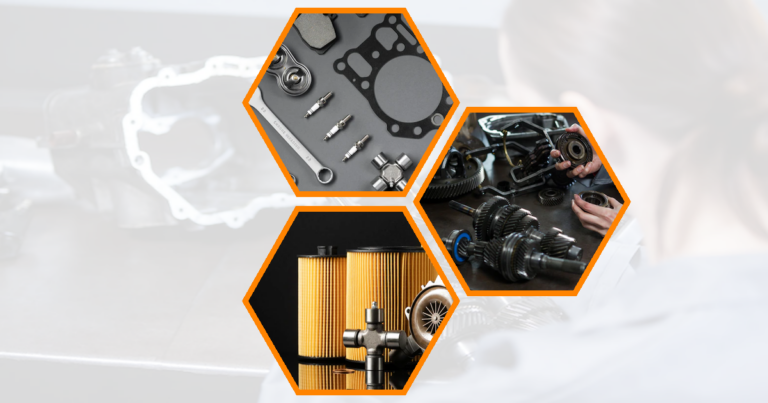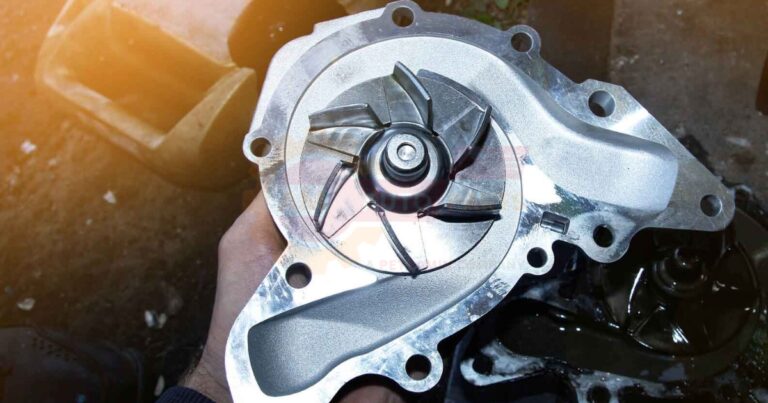In the competitive world of automotive manufacturing and repair, sourcing auto parts with reliability and quality assurance is crucial. Selecting the right supplier can make or break your business, impacting everything from customer satisfaction to safety standards. This guide will walk you through the essential steps in sourcing auto parts, ensuring reliability, and implementing quality assurance processes.
Sourcing Auto Parts, Reliability, Quality Assurance, and Supplier Selection
The Importance of Quality in Auto Parts Sourcing
Quality is the cornerstone of any successful auto parts sourcing strategy. High-quality parts ensure the safety and longevity of vehicles, reducing the risk of component failure. Poor quality parts can lead to increased maintenance costs and potential safety hazards, which can damage your business’s reputation.
- Safety and Performance : High-quality auto parts ensure vehicles operate safely and efficiently.
- Cost Efficiency : Investing in quality parts reduces long-term maintenance and replacement costs.
- Customer Satisfaction : Reliable parts lead to satisfied customers and repeat business.
Key Factors in Supplier Evaluation
Evaluating potential suppliers is a critical step in sourcing auto parts. Consider factors such as the supplier’s reputation, financial stability, and ability to meet your specific needs. A thorough evaluation helps in selecting a supplier who can consistently deliver high-quality parts.
- Reputation : Check the supplier’s history and standing in the industry.
- Financial Stability : Ensure the supplier has the financial resources to fulfill orders.
- Capability : Assess whether the supplier can meet your volume and quality requirements.
Implementing Robust Quality Assurance Processes
Quality assurance processes are essential to ensure that the parts you receive meet your standards. Implementing these processes helps in identifying defects early and maintaining consistent quality.
- Inspection Protocols : Establish rigorous inspection procedures for incoming parts.
- Supplier Audits : Conduct regular audits to ensure compliance with quality standards.
- Feedback Mechanisms : Implement systems for continuous feedback and improvement.
Identifying Reliable Auto Parts Suppliers
Researching Supplier Credentials and Certifications
Researching a supplier’s credentials and certifications is a vital step in ensuring reliability. Certifications such as ISO 9001 indicate a commitment to quality management systems.
- ISO Certification : Look for suppliers with ISO 9001 or similar certifications.
- Industry Awards : Consider suppliers recognized for excellence in the industry.
- Professional Affiliations : Check for memberships in reputable industry associations.
Evaluating Supplier Track Records and Customer Reviews
A supplier’s track record and customer reviews provide insight into their reliability and quality. Positive reviews and a strong track record indicate a supplier’s ability to meet expectations.
- Customer Testimonials : Read reviews and testimonials from other businesses.
- Delivery History : Evaluate the supplier’s history of on-time deliveries.
- Defect Rates : Consider the supplier’s historical defect rates.
Assessing Manufacturing Capabilities and Capacity
Understanding a supplier’s manufacturing capabilities and capacity is crucial. This ensures they can meet your demand without compromising on quality.
- Production Facilities : Visit the supplier’s production facilities if possible.
- Technology and Equipment : Assess the technology and equipment used in manufacturing.
- Scalability : Ensure the supplier can scale production as needed.
Ensuring Auto Parts Quality Through Rigorous Testing
Implementing Incoming Quality Control Measures
Incoming quality control measures are essential to verify the quality of parts upon arrival. These measures help in identifying defects before parts are used in production.
- Inspection Procedures : Develop detailed inspection procedures for incoming parts.
- Sampling Techniques : Use statistical sampling techniques to assess quality.
- Defect Tracking : Implement systems to track and address defects.
Conducting Regular Supplier Audits
Regular supplier audits are crucial for maintaining quality standards. Audits help in identifying areas for improvement and ensuring compliance with quality requirements.
- Audit Frequency : Schedule regular audits based on supplier performance.
- Audit Criteria : Develop clear criteria for evaluating supplier performance.
- Corrective Actions : Implement corrective actions based on audit findings.
Utilizing Third-Party Testing and Certification
Third-party testing and certification provide an unbiased assessment of part quality. These services help in verifying compliance with industry standards.
- Independent Testing Labs : Use independent labs for unbiased testing.
- Certification Programs : Participate in certification programs for quality assurance.
- Compliance Verification : Ensure parts meet all relevant industry standards.
Developing Strong Supplier Relationships for Consistent Quality
Establishing Clear Communication Channels
Clear communication channels are essential for building strong supplier relationships. Effective communication helps in resolving issues quickly and maintaining quality standards.
- Regular Meetings : Schedule regular meetings to discuss performance and expectations.
- Communication Tools : Use tools like email, phone, and video conferencing for communication.
- Feedback Systems : Implement systems for providing and receiving feedback.
Setting Performance Expectations and KPIs
Setting clear performance expectations and key performance indicators (KPIs) is crucial. These metrics help in measuring supplier performance and ensuring quality.
- Performance Metrics : Define metrics for quality, delivery, and cost.
- Regular Reviews : Conduct regular reviews to assess supplier performance.
- Incentive Programs : Implement incentive programs for meeting or exceeding expectations.
Implementing Continuous Improvement Programs
Continuous improvement programs help in enhancing supplier performance over time. These programs focus on identifying and addressing areas for improvement.
- Process Improvement : Work with suppliers to improve manufacturing processes.
- Training Programs : Provide training to suppliers on quality standards.
- Innovation Initiatives : Encourage suppliers to innovate and improve.
Leveraging Technology in Auto Parts Sourcing and Quality Management
Using Digital Platforms for Supplier Discovery and Evaluation
Digital platforms are valuable tools for discovering and evaluating suppliers. These platforms provide access to a wide range of suppliers and detailed information on their capabilities.
- Online Marketplaces : Use online marketplaces to find potential suppliers.
- Supplier Databases : Access databases with detailed supplier information.
- Comparison Tools : Use tools to compare suppliers based on key criteria.
Implementing Quality Management Software
Quality management software helps in tracking and managing quality assurance processes. This software provides real-time data and insights into supplier performance.
- Data Tracking : Use software to track quality metrics and performance data.
- Automated Reporting : Implement automated reporting for quality assurance.
- Integration Capabilities : Ensure software integrates with existing systems.
Utilizing Data Analytics for Supplier Performance Tracking
Data analytics provides valuable insights into supplier performance. These insights help in identifying trends and making informed decisions.
- Performance Dashboards : Use dashboards to visualize supplier performance data.
- Trend Analysis : Analyze trends in quality, delivery, and cost.
- Predictive Analytics : Use predictive analytics to anticipate future performance.
Balancing Cost and Quality in Auto Parts Sourcing
Total Cost of Ownership
Understanding the total cost of ownership (TCO) is essential for balancing cost and quality. TCO includes all costs associated with purchasing and using auto parts.
- Initial Costs : Consider the initial purchase price of parts.
- Maintenance Costs : Factor in maintenance and repair costs.
- Lifecycle Costs : Evaluate costs over the entire lifecycle of the part.
Negotiating Pricing Without Compromising Quality
Negotiating pricing is a critical aspect of sourcing auto parts. It’s important to achieve cost savings without compromising on quality.
- Volume Discounts : Negotiate discounts based on purchase volume.
- Long-Term Contracts : Consider long-term contracts for better pricing.
- Value-Based Pricing : Focus on value rather than just price.
Implementing Value Engineering Initiatives
Value engineering initiatives help in reducing costs while maintaining quality. These initiatives focus on optimizing design and manufacturing processes.
- Design Optimization : Work with suppliers to optimize part design.
- Material Substitution : Consider alternative materials for cost savings.
- Process Improvement : Implement process improvements for efficiency.
Managing Supply Chain Risks in Auto Parts Sourcing
Diversifying Supplier Base to Mitigate Risks
Diversifying your supplier base is a key strategy for managing supply chain risks. A diverse supplier base reduces dependency on a single supplier and mitigates risks.
- Multiple Suppliers : Source parts from multiple suppliers to reduce risk.
- Geographic Diversity : Consider suppliers from different geographic regions.
- Backup Suppliers : Identify backup suppliers for critical parts.
Implementing Supplier Contingency Plans
Supplier contingency plans are essential for managing disruptions. These plans outline steps to take in case of supplier failure or other disruptions.
- Risk Assessment : Conduct risk assessments to identify potential disruptions.
- Contingency Planning : Develop plans for dealing with supplier disruptions.
- Regular Updates : Update contingency plans regularly based on changing conditions.
Monitoring Global Supply Chain Trends and Disruptions
Monitoring global supply chain trends helps in anticipating disruptions. Staying informed allows you to take proactive measures to mitigate risks.
- Industry Reports : Read industry reports on supply chain trends.
- News Monitoring : Stay informed about global events affecting supply chains.
- Trend Analysis : Analyze trends to anticipate potential disruptions.
Sustainability Considerations in Auto Parts Sourcing
Evaluating Suppliers’ Environmental Practices
Evaluating suppliers’ environmental practices is crucial for sustainable sourcing. Consider factors such as waste management, energy use, and emissions.
- Environmental Audits : Conduct audits to assess environmental practices.
- Sustainability Certifications : Look for suppliers with sustainability certifications.
- Green Initiatives : Consider suppliers with active green initiatives.
Sourcing Eco-Friendly and Recyclable Materials
Sourcing eco-friendly and recyclable materials is an important aspect of sustainability. These materials reduce environmental impact and support circular economy principles.
- Recyclable Materials : Prioritize materials that can be recycled.
- Eco-Friendly Alternatives : Consider eco-friendly alternatives to traditional materials.
- Supplier Collaboration : Work with suppliers to develop sustainable materials.
Implementing Circular Economy Principles in Auto Parts Sourcing
Implementing circular economy principles helps in reducing waste and promoting sustainability. These principles focus on reusing and recycling materials. Electric vehicle adoption is growing as more people choose cars that run on electricity instead of gas These vehicles help reduce pollution and are becoming cheaper and easier to use over time Automotive aftermarket growth initiatives focus on expanding sales of car parts and accessories after the original purchase Companies create new products and marketing strategies to boost their business in this market
Streamline automotive distribution helps car companies get their vehicles to dealers faster and more efficiently It makes sure the right cars reach the right places at the right time Vehicle direction controller The
Counterfeit detection strategies help people spot fake money and products These methods use special tools and tricks to find copies that are not real Automotive mechanism distinctions Cars have different parts that work together to make them move and stop Some cars use gasoline engines while others use electric motors to power their wheels
Automotive camshaft mechanism The Suspension damping components help control how your car bounces and moves over bumps They make your ride smoother and more comfortable by absorbing shocks from the road
Brake system differences Cars can have different types of brakes like disc brakes or drum brakes which work in unique ways to slow down or stop the vehicle
- Material Reuse : Encourage the reuse of materials in production.
- Recycling Programs : Implement recycling programs for end-of-life parts.
- Lifecycle Assessment : Conduct lifecycle assessments to identify improvement areas.
Compliance and Regulatory Aspects of Auto Parts Sourcing
Understanding Industry Standards and Regulations
Understanding industry standards and regulations is essential for compliance. These standards ensure the safety and quality of auto parts.
- Regulatory Requirements : Stay informed about relevant regulations.
- Industry Standards : Ensure compliance with industry standards.
- Certification Programs : Participate in certification programs for compliance.
Ensuring Supplier Compliance with Safety Regulations
Ensuring supplier compliance with safety regulations is crucial for quality assurance. Non-compliance can lead to safety hazards and legal issues.
- Safety Audits : Conduct audits to ensure compliance with safety regulations.
- Training Programs : Provide training on safety standards and regulations.
- Compliance Monitoring : Implement systems for monitoring compliance.
Managing Documentation and Traceability Requirements
Managing documentation and traceability is essential for compliance and quality assurance. Proper documentation ensures traceability and accountability.
- Documentation Systems : Implement systems for managing documentation.
- Traceability Protocols : Develop protocols for traceability of parts.
- Record Keeping : Maintain accurate records for compliance and audits.
FAQs
How do I ensure the quality of sourced auto parts?
Ensuring the quality of sourced auto parts involves implementing rigorous quality assurance processes. This includes conducting regular supplier audits, utilizing third-party testing, and establishing clear quality standards. By focusing on these areas, you can maintain high-quality standards and reduce the risk of defects.
What are the key factors in selecting reliable auto parts suppliers?
Key factors in selecting reliable auto parts suppliers include evaluating their credentials, track record, and manufacturing capabilities. It’s important to assess their financial stability, reputation, and ability to meet your specific needs. By considering these factors, you can select a supplier who consistently delivers high-quality parts.
How can I verify the authenticity of sourced auto parts?
Verifying the authenticity of sourced auto parts involves checking supplier credentials and certifications. Look for suppliers with ISO certifications and industry awards. Additionally, consider using third-party testing and certification services to ensure compliance with industry standards.
What are the best practices for quality assurance in auto parts sourcing?
Best practices for quality assurance in auto parts sourcing include implementing incoming quality control measures, conducting regular supplier audits, and utilizing third-party testing. Establishing clear communication channels and setting performance expectations are also crucial for maintaining quality standards. By following these practices, you can ensure the reliability and quality of sourced auto parts.






